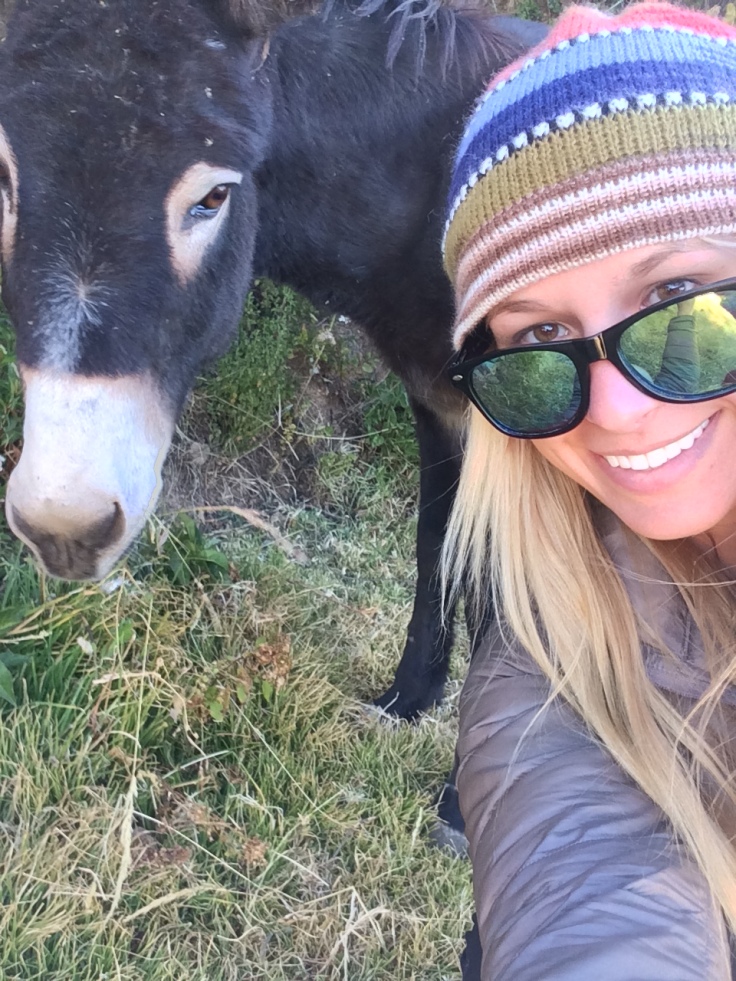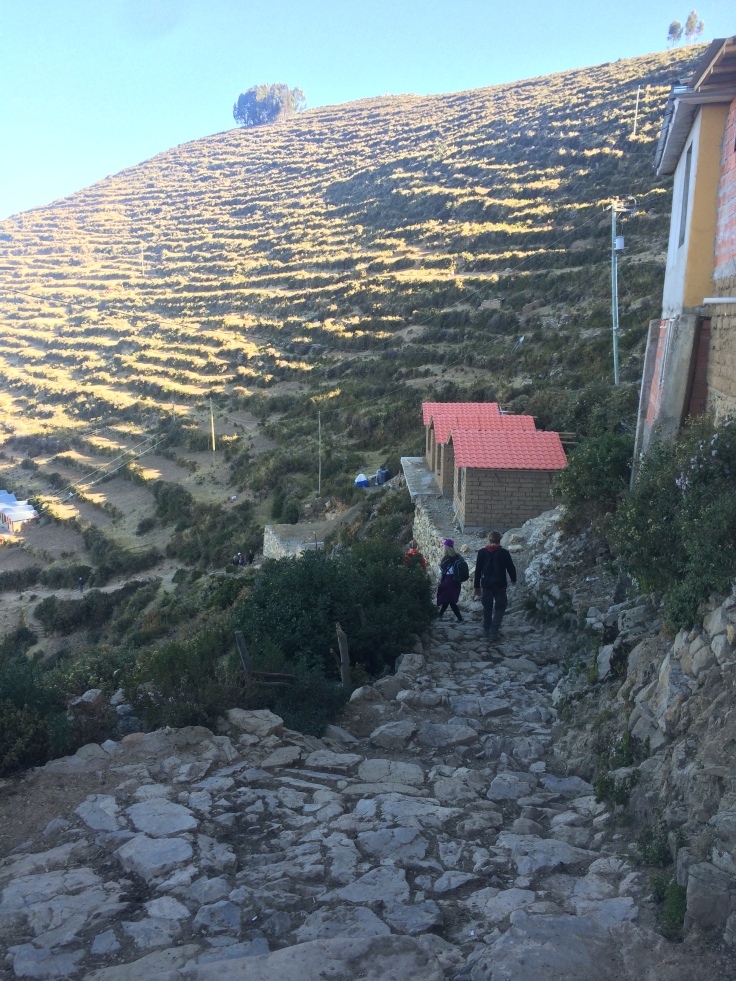After two full weeks of trekking, sightseeing, and taking in the Peruvian culture, the time came to say goodbye to Peru and move along to Bolivia. We had booked seats on Bolivia Hop, an overnight bus that crosses from Peru to Bolivia while making a few fun stops along the way. We showed up at the bus station in Cusco at 9pm, as directed, and the station was pitch black! Fortunately, our nice cab driver sat with us until the Bolivia Hop staff showed up. We then boarded the bus and settled in for a 7 hour overnight drive to Puno, a Peruvian town on the shore of Lake Titicaca.
At 5:30am, we got off at Puno and had a small breakfast before boarding a boat for a tour of the floating islands of Los Uros in the middle of Lake Titicaca. Lake Titicaca is the largest lake in South America, and the highest navigable lake in the world at 12,500 feet. The altitude was evident, as it was freezing cold as we boated across! After about 30 minutes, we reached the village of floating islands–42 islands made by the Uros people from reed straw. The Uros people still maintain their unique Uru culture, but also speak Spanish and have some modern amenities (like motors for some reed boats).
The local ladies welcomed us warmly, and demonstrated how the floating lakes are built from living reeds, soil, straw, and rope, and are anchored in the lakes. These islands are maintained periodically throughout the year with fresh installments of reed overlays. It felt really strange to walk across the ground cushioned by reeds and to know I was floating! One local lady invited us into her hut, and explained how it was wired for electricity only 2 months earlier through the installation of solar panels. We even learned how to say hello in Uru–kamisaraki!



After the visit, we headed back to Puno via boat and boarded the bus for another 2 hours, before crossing the border over foot into Bolivia. We then boarded a new Bolivia Hop bus, and 10 short minutes later we were in the scenic Bolivian lakeside village of Copacabana. After a quick lunch, we then boarded another boat, and rode for 1.5 hours across Lake Titicaca to Isla del Sol.

Isla del Sol was absolutely beautiful, and I really wish I could have spent an extra night here! From the boat, we trekked about 40 minutes through the sun temple and small village on the island, soaking in the views all along the way. I stopped to do some shopping with a local vendor, buying 2 pairs of baby alpaca socks for just 60 bolivianos (less than 9 USD!). While I bargained with her a small amount, I paid her the amount she asked. The more I travel, the more I realize that tourism is the economic lifeblood for so many of these local places. I can do my part to support the local economy by paying up for some goods–even though I’m on a “student budget” now, I feel fortunate enough to be able to travel and afford these things, and it’s a privilege to be able to support the places I am visiting economically.


 After our short trek across Isla del Sol, we boarded our boat again to make the 1.5 hour journey back to Copacabana. We then boarded the bus, and drove the 4 hours to La Paz, the capital of Bolivia. The ride was exciting for 2 mains reasons–1) At one point, we had to get off the bus and ride a small motorboat across a Lake Titicaca tributary, while our bus floated by on a ferry. We then reboarded on the other side. This experience was unique and fun, but made me appreciate bridges all the same. 2) We watched one of my favorite movies of all time on the bus ride–Interstellar!! Yes, I am not ashamed of my nerdiness.
After our short trek across Isla del Sol, we boarded our boat again to make the 1.5 hour journey back to Copacabana. We then boarded the bus, and drove the 4 hours to La Paz, the capital of Bolivia. The ride was exciting for 2 mains reasons–1) At one point, we had to get off the bus and ride a small motorboat across a Lake Titicaca tributary, while our bus floated by on a ferry. We then reboarded on the other side. This experience was unique and fun, but made me appreciate bridges all the same. 2) We watched one of my favorite movies of all time on the bus ride–Interstellar!! Yes, I am not ashamed of my nerdiness.
Once we arrived in La Paz, we were dropped off at the wrong hostel, but quickly found our way to the correct one. After over 24 hours on a bus, I enjoyed a hot shower and warm bed and slept for about 10 hours. Today, I am still really tired, but hope to see a little of what La Paz has to offer before heading to the salt flats of Uyuni tomorrow!



June 21, 2016 at 4:20 am
Hey Gracie, love your blog! I’m planning a trip to South America so find these posts really helpful, thank you! I’m thinking of using Boliva Hop (and Peru Hop), would you recommend them? Did you book Lake Titicaca on the bus or through another company? Looking forward to your Uyuni post. 🙂
LikeLike
June 21, 2016 at 10:11 pm
Hi there! Thanks for reading and I’m excited to hear you’re planning a trip to South America… It’s a very special place! I did not use Peru Hop but I’ve heard good things. I would highly recommend Bolivia Hop! It was well-managed and organized, and I booked all the tours I did seamlessly through the bus company. It’s very convenient and cost efficient! I think Peru Hop and Bolivia Hop are owned by the same company too. I hope this helps!
LikeLike